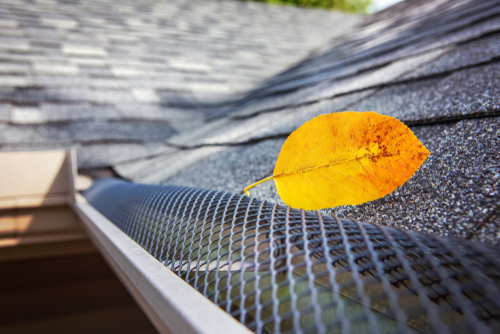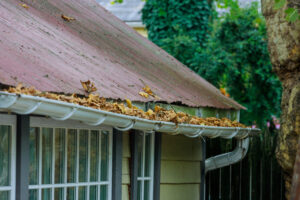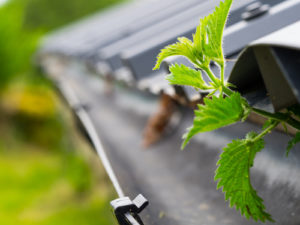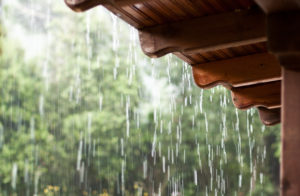Advantage and Disadvantages to the most common Gutter Options
Gutters are an important part of any home, not only for the purpose of evacuating water from the roof and foundation, but gutters also play a key aesthetic role for the home’s architecture. This is particularly true for specialty designed and older residences. This article describes the most common types of gutters and what you need to know about each to determine if it makes sense for your home.
Here is the breakdown:
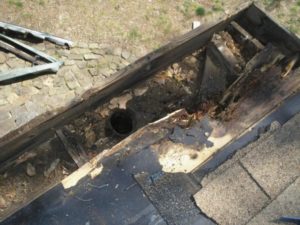
Yankee Gutters
While most gutters today are installed at the roofline or above the flood plain, Yankee Gutters are built-in components of the home. Dating back to houses of the 18th century and also known as Pool or Philadelphia Gutters, Yankee Gutters are normally part of a slate roof installation. Drainage is still through a downspout that passes through the roof deck and eaves.
The advantage to Yankee Gutters is that they work as part of a multi-tiered drainage system. In other words, they offer a controlled process from the roof down to an attached system. This prevents potential clogs and leaks along the foundation.
Two big disadvantages are their construction and safety. Yankee Gutters are connected to the roof via soldering pieces made of copper or another metal and they can become a fire hazard.
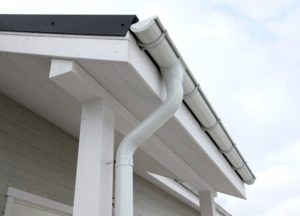 Half Round Gutters
Half Round Gutters
Mentioned in a previous blog, these gutters are a series of half-round pieces attached to the roofline. They are normally made of aluminum or galvanized metal.
The advantage to these gutters is their look. For many, their half-round design makes them seem like decorative molding around their rooflines instead of a drainage tool. In addition, they come in a variety of styles that compliment a property’s exterior.
Unfortunately, the disadvantages to half-round gutters outweigh the positive. First, fewer manufacturers produce them, so there are potential delays in distribution and installation. Second, they’re more expensive since they require special threaded rods and hanging brackets. Third, because of their design, half round gutters are heavier and don’t hold as much water. Thus, the combined weight of liquid and material can result in severe damage to your home’s exterior should the gutters break off of their hangers.
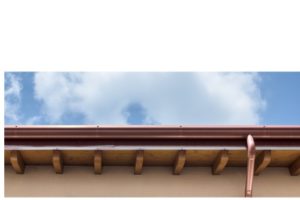 Copper Gutters
Copper Gutters
Before aluminum became the standard, copper was used in gutter construction. Today, this metal can be formed into half-round and standard gutters. Installation is done at the roofline with standard or copper-made brackets.
Besides making your home’s exterior look good, copper is a long-lasting metal. After 15 years or through an application treatment, copper develops lining that protects it from rust and other harmful elements.
Unfortunately, the beauty of copper gutters can be a higher investment to produce and install. Thus, those costs get forwarded to you. In addition, installation can be difficult due to continued cuts and adjustments in the gutter joints.
If you’d like a quote on copper gutters, K-Guard is happy to provide a free estimate, as the K-Guard gutter system is also available in copper.
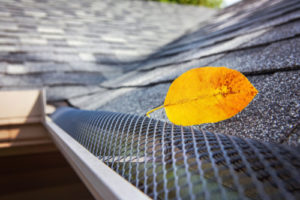 Covered Gutters
Covered Gutters
Covered gutters were invented to prevent clogged channels and downspouts. These gutters either come built with a cover or have the ability to add one on at a later date. The advantage to covered gutters is they minimize the amount of leaves, whirlybirds, and other natural debris that can fall into the channels.
The disadvantage: while they minimize the amount of natural debris, they don’t eliminate them. There’s still a potential for clogs if a cover is dislodged or smaller pieces slip in-between the seams. For more information on covers, check out this blog which covers all of the different options and variations.
 K-Guard Leaf Free Gutters
K-Guard Leaf Free Gutters
K-Guard gutters are named so because of their design. They are seamless, covered K-style gutters – the same ones manufactured by the industry for the last 40 years. They are made from lightweight, yet heavy duty, aluminum and come in a variety of colors to fit the exterior of any home. K-Guard gutters can also be purchased as copper gutters.
The advantages to the K-Guard Leaf Free Gutter System are numerous. For instance, they are engineered as one unit instead of a series of attached pieces, which adds an aesthetic improvement to any home. They’re installed above the flood plain of your home to prevent damage to your fascia or foundation and will never void a roof’s warranty. The seamless cover design prevents any debris from falling into the wider-than-average channels and there is a rear drainage channel to prevent any water getting in between the gutter and the fascia board. Because of this, the only thing that flows into the downspouts is rain and melted snow.
If you’re looking for a 100% lifetime guaranteed maintenance-free gutter option, call at 913-229-7550 for a free estimate, or click here to fill out a form online and we’ll get back to you within 24 hours.

